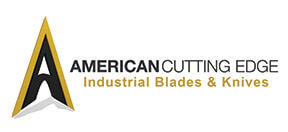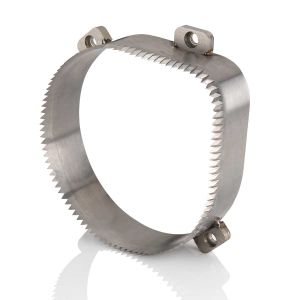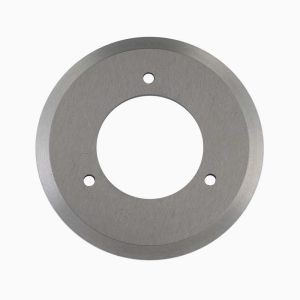Top 3 Reasons to Consider Carbon Steel Skinner Blades

The history of adding carbon to iron dates back to 400 BC when Indian metalworkers devised the very first smelting method. Known as Wootz steel, the material was shipped across the world and was used to forge Damascus steel swords. Rumored to be sharp enough to cut feathers in midair and slice through a rifle barrel, these weapons were renowned for their toughness, resistance to shattering, and ability to be honed into a resilient, sharp edge while still remaining flexible.
Why Blade Material Matters in Meat Processing
While your skinning knives don't have to cut through a rifle barrel or feathers, they do need to be razor sharp. The accuracy, consistency, and speed of the skinning process are incredibly important aspects of meat skinner blades whether you're working manually or using a skinning machine. In order to maximize yields, the quality of the cut matters for the last use of the blade as much as it does for the first.
Meat processing knives such as skinner blades are readily available in the industry standard material, 440C. But, there are other material options. With decades of experience making food processing knives, American Cutting Edge has been instrumental in the advancement of blade materials that help our valued customers achieve a consistent and profitable operations without sacrificing their budget. One of those advancements is the addition of carbon to replacement skinning machine blades.
In an effort to more closely match the industry standard, we changed our material to 440A SS, which is commonly known as razor blade steel, to those in the industry. The benefits of moving to 440A SS were quality related and it did a great job on removing skin and fat without cutting and removing meat. However, the accuracy and sustainability just weren't there for membrane skinning replacement blades, remembers ACE Sales Manager, Josh Brandenburg. The edges just weren't quite where they needed to be for our membrane skinning customers. With that in mind, we took a look at a carbon steel option with great results.
We found that even though our food processing knife customers were a little wary of using carbon steel for their commercial meat processing equipment blades, once they tried it they were sold on the benefits, continues Brandenburg.
Why Should Commercial Meat Processing Operations Consider Carbon Steel Over Stainless?
1. Carbon steel is harder With a carbon content of 0.95-1.2%, its carbon content mirrors that of 440C, which is known as the industry standard for skinner machine blades. The more carbon in a razor, the higher the hardness. And with higher hardness, a better quality edge can be put on a blade. Soft steel will walk during grinding, which makes achieving a high-quality edge difficult to achieve. One of the common trade offs of using increased carbon is the opportunity for corrosion. What many skinning operations may not realize is that since meat is basic on the pH scale, it actually acts as a rust inhibitor. This provides some insulation from blade breakdown. He continues, "We've conducted submersion tests on our blades for up to 72-hours and have found no signs of corrosion. We've had customers using our carbon steel skinner blades for a decade or more without a single complaint of rust."
2. Better edge retention An additional benefit to increased hardness of carbon steel is how long the edge will last. Harder steels have better resistance to wear while softer materials are easier to gouge or scratch. It's not enough for a skinner blade to have a high-quality edge. The edge has to last to provide high yields between change outs. Edge retention makes an enormous difference in the quality and the profitability of the skinning operation, offers Brandenburg. This combined with the precision of the cut carbon steel offers helps to drive profitability.
3. Carbon steel is budget-friendly Carbon steel blades cost 25 to 30% less than the typical 440C material that businesses use in meat processing. "With over 25 to 30% savings going right to the bottom line, our most savvy skinner blade customers are finding that they don't have to pay so much for stainless steel blades. Carbon steel offers and affordable option without sacrificing cut quality," says Brandenburg.
Get Help Choosing the Right Skinning Blade
While there are many reasons to consider carbon steel for your skinning replacement blades, depending on your geographic location, it might not be the right choice for you. We're aware that in certain regions of the world, such as Brazil, the use of carbon steel is not acceptable for skinning companies. We offer an exceptionally high-quality stainless steel option for those customers who are not able to use carbon or who just have not made the switch says Brandenburg. ACE has a solution for every operational challenge whether you're looking for cost-savings, increased yield, or corrosion resistance. If the answer to your problem isn't on our shelf, we have the ability to create custom solutions to help you get the results you need.
Contact a skinning blade specialist at American Cutting Edge to learn more about how we can support your needs.





